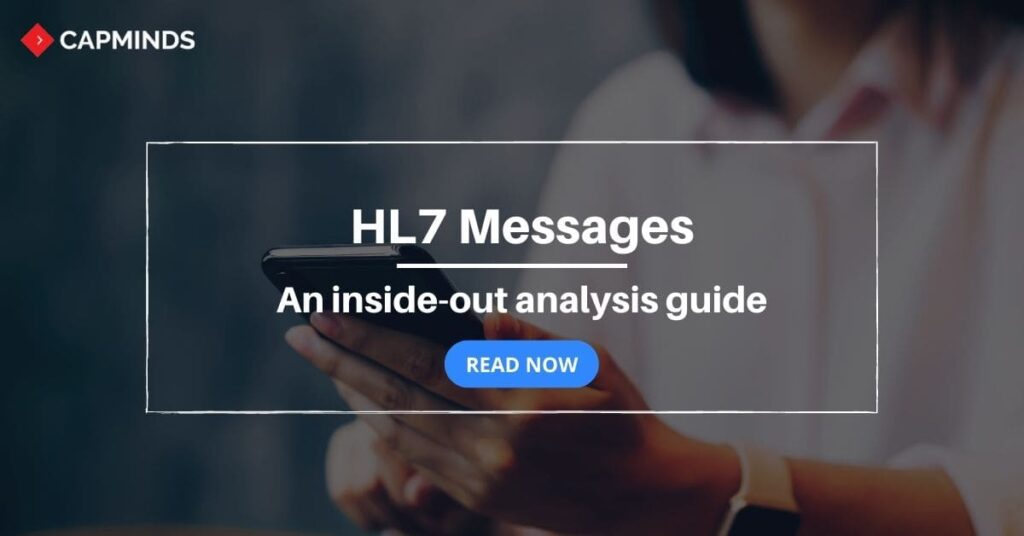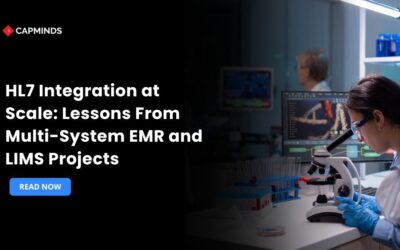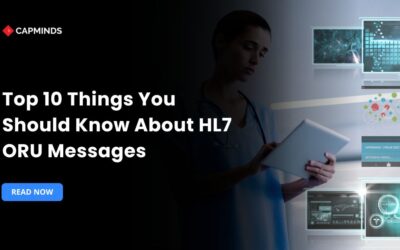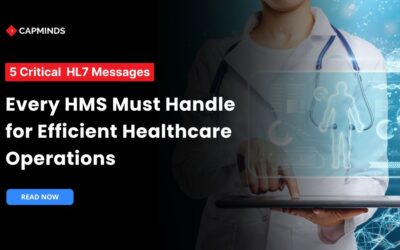HL7 Messages: An Inside-Out Analysis Guide
HL7 Messages furnishes files for the usage with Jaa CAPS applications in the Java syntax format. HL7 Messages are also known as Message Library or Object Type definition (OTD) Library.
It is a collection of pre-built message structures for industry-standard format.
HL7: Encircling The Term
- Health Level Seven (HL7) – a healthcare electronic data exchange standard.
- Provides – standardized format and protocols for the transfer of health data across healthcare systems.
- It is flexible and allows different systems to exchange patient information as needed.
- It is also an organization with tech committees and special interest groups.
- The organization’s focus – providing standards for the management, integration, and exchange of healthcare services.
- Facilitates – flexibility, budget-friendly approaches, guidelines, standards, methods, and more for achieving secured interoperability between health information systems.
HL7 Message Library
This is designed to work concurrently with the Sun Adapter for TCP/IP HL7 to support you to set up and maintain a well-organized and dependable HL7 Messaging system.
The HL7 Message Library supports the below-mentioned HL7 versions:
- HL7 Version 2.1
- HL7 Version 2.2
- HL7 Version 2.3
- HL7 Version 2.3.1
- HL7 Version2.4
- HL7 Version 2.5
- HL7 Version 2.5.1
- HL7 Version 2.6
- HL7 Version 3
HL7 Message Library Editor
- The files can be copied and altered using the Message Library Editor.
- The editor permits you to test libraries and verify the correctness and availability of data formats and elements, that too before runtime.
- It carries out a trace analysis during the unmarshal process to help with troubleshooting.
HL7 Standard
- Directs the interfaces among different systems that exchange health information (like admissions, registration, queries, discharge data, billing, etc.).
- Does not try to presume a particular structure regarding the placement of data within applications.
- It is designed to assist a common patient care system and a more dispersed environment where data are held in departmental systems.
- HL7 is a way for letting different applications and data structures function in a diverse system environment to communicate with each other.
RELATED: Choosing The Right HL7 Standards For Better Patient Care?
HL7 Message Components
An HL7 message or transaction has several components in a pre-determined sequence. An HL7 message is a unit of data exchanged between systems. Each message has a message type that establishes its purpose.
Example:
- ADT Message type – utilized to pass on parts of a patient’s Patient Administration (ADT) data between systems.
- Each message’s three-character code (Segment IDs) will identify its type.
- A real-time encounter like the admission of a patient begins the exchange of messages.
1. Segments
- A message segment is a rational grouping of data fields.
- It may happen only once or repeated in a message and may be required or optional.
- Each segment is provided with a name.
Example:
- The ADT message may have these segments: Message Header (MSH), Event Type (EVN), Patient ID (PID), and Patient Visit (PV1).
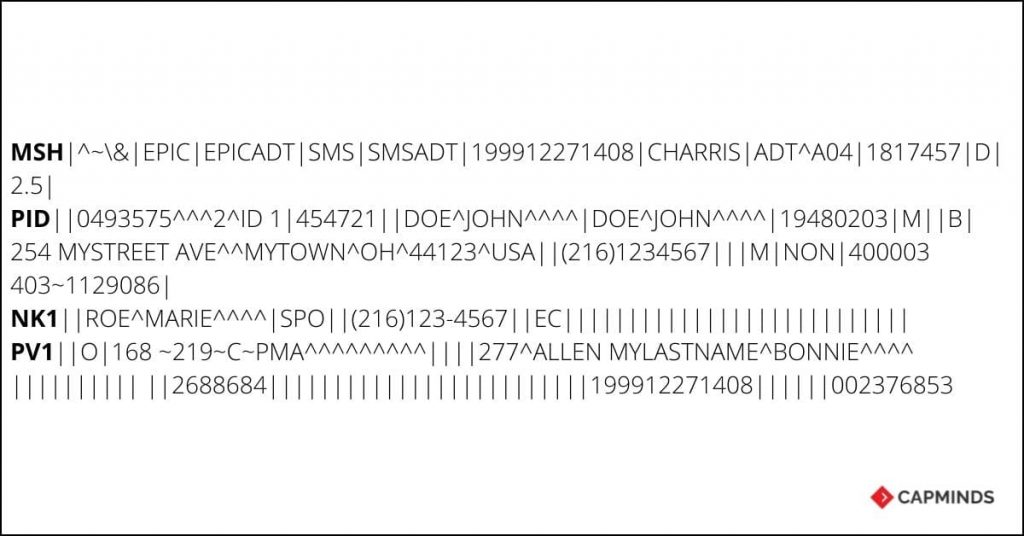
- The segments are identified by Segment IDs.
2. Fields
A field is a string of characters. When fields are exchanged, they are sent as “character strings”. HL7 data fields on the unnoticed areas may take on the null value. The null value transmitted as 2 double quote marks (“”), is different from excluding an optional data field.
The difference emerges when the contents of a message are used to update a record in a database rather than create a new one.
- If no value is sent – the old value must be unchanged.
- If the null value is sent – the old value must be changed to null.
Data field characteristics:
- Position: The prime position of the data field inside the segment.
- Maximum length: Maximum number of characters that one event of the data field may engage.
- Type of data: Limitation on the contents of the data field. Example: TX (text data), SN (structure numeric), PT (processing time), DT (date), and so on.
- Optionality: The requirement, optionality, and conditions of a field in a segment.
- Repetition: Whether the field may not or may repeat, or the number of times the field may repeat.
- Table: How HL7 determines the values for tables differs on the institution, data type, reference, and so on.
- ID number: Number that uniquely recognizes the data field throughout the standard.
- Name: Descriptive name for the field.
3. Delimiter
- Message Delimeters are the particular prearranged characters, used to describe the start and the end of a message component.
- They are the field separator, segment terminator, repetition separator, component separator, subcomponent separator, and escape character.
4. Escape sequence
Field escape sequences in text differ depending on the type of field.
HL7 Message Sets
HL7 Messages are put into transaction sets based on the type or purpose.
Example:
An ADT message is used to exchange patient admission, transfer, demographic, and discharge information. The ADT transaction set incorporates messages that transmit instances, portions, or updates of this data required to the participating healthcare system.
1. Financial Managing: This set facilitates the entry and alteration of information regarding billing accounts, adjustments, payments, charges, insurance, and other related patient billing and A/R information.
2. Control: describes the common rules that bid all messages together with forms used to define messages, encoding rules, programming procedures, common message segments, etc.
3. Patient Administration: This transaction set (HL7 standard, chapter 3), is one of the majorly used, that provides demographic and visit information of patients.
4. Query: This set provides requests for particular information with either a postponed or immediate response, depending on the type of query.
5. Order Entry: This set provides for the transference of orders for services or materials, and information relating to orders, for specific departments or patients, like components that specify billing, quantity, timing, data, etc.
6. Observation Reporting: This set provides for the transference of structured patient-oriented clinical information like clinical lab results, imaging study results, vital signs, drug allergies, etc.
7. Master File: It is a general reference file that contains more or less lasting descriptive information about a principal subject. Files like the doctor, location, system, user, and patient status are some examples.
8. Scheduling: This set supports the communication of different events regarding schedules, appointments, services, and resources. It controls the dates and times available for appointments for services or the use of resources. This set contains 3 basic message types:
- Request transaction: For requesting an appointment.
- Query transaction: Requests scheduling information between systems.
- Unsolicited transaction: Collects and provides scheduling information between systems.
9. Patient Referral: It provides for patient referral communications between individual healthcare entities including primary healthcare providers, hospitals, labs, and other healthcare entities.
10. Medical Records/Information Management: The Medical Document Management (MDM) set provides for the transference of uploaded or new documents.
11. Patient Care: It supports the communication of records relating to problems including clinical problems, goals, and clinical pathway information.
12. Laboratory Automation: This set supports the communication of equipment information like inventory, status, logs and services, response, test code settings, notification, comments, and specimen status.
13. Application Management: The set supports the transference of application management information and application control-level requests.
14. Personnel Management: It supports the transference of details concerning education, practitioner, language, and professional affiliations, as well as information on staff identification, and practitioner organization.
HL7 Message Types [The Most Commonly Used]
- ADT – Admit, Discharge, Transfer
- ACK – General acknowledgment
- DFT – Detailed Financial Transaction
- BAR – Add/change billing account
- MDM – Medical Document Management
- MFN – Master Files Notification
- QRY- Query, original mode
- ORM – Order (pharmacy/treatment)
- ORU – Observation result (unsolicited)
- RDE – Pharmacy/treatment encoded order
- RAS – Pharmacy/treatment administration
- RGV – Pharmacy/treatment give
- SIU – Scheduling Information Unsolicited
Final Thoughts
Join hands with CapMinds Technologies, the place that will make you achieve your goals by combining “Expertise+Hardwork+Commitment”.You have found the perfect and best all-in-one HL7 FHIR services, and Interoperability solutions for your growth.
We facilitate;
- Innovatory exchange
- Client-centered services
- Clinical & financial integrations, and
- Enhanced activation processes for your individual and collective needs.
With our best HL7 FHIR standards and interoperability solutions, enhancing your organizational processes becomes easier. Our EHR integrated laboratory, imaging, e-prescriptions, EPCS, pharmacy, and more, practices can process without disruptions and attract patient satisfaction.
Our services that could potentially take you on the top run:
- Cloud management and operations
- Highly scalable features
- Secure cloud
- System patching, and
- Version upgrades.
The exclusive technological partnership services we provide
- Healthcare mobile & health app development
- Healthcare software development partnership: HL7/FHIR interface development
- Managed cloud services
- RPA solutions
CapMinds HL7 FHIR services cover your patients’ health data with maximum security, privacy, and confidentiality. We help you with the implementation process of the latest versions like HL7 Version 2, Version 3, FHIR, SMART on FHIR, CDA, X12, Mirthconnect, and security standards.
“Unite with us to enjoy the maximum benefits with our HL7 services and rise to be the first”
